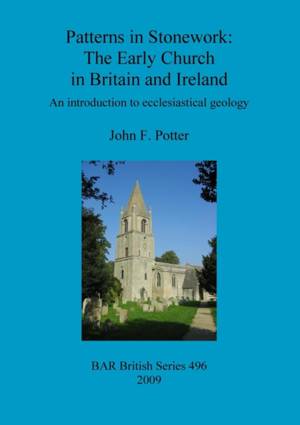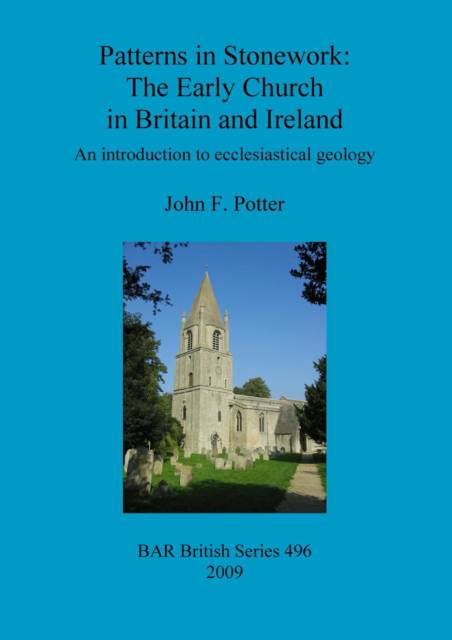
- Retrait gratuit dans votre magasin Club
- 7.000.000 titres dans notre catalogue
- Payer en toute sécurité
- Toujours un magasin près de chez vous
- Retrait gratuit dans votre magasin Club
- 7.000.000 titres dans notre catalogue
- Payer en toute sécurité
- Toujours un magasin près de chez vous
Patterns in Stonework
The Early Church in Britain and Ireland: An introduction to ecclesiastical geology
John F PotterDescription
This work falls into two parts. In the first, the author undertakes a summary of his ecclesiastical geological research of thirty years and in the second part this information is applied to a number of early churches in Ireland. Chapters 1 and 2 examine the characteristics of stone emplacement as they apply in particular to the Anglo-Saxon churches of England. They illustrate how the craftsmen of this period used stone in certain structural features of their ecclesiastical buildings in distinctive styles, and how these styles may be distinguished from the work of the Norman or 'Romanesque' period that followed. They also provide details of the simplified nomenclature that has been devised to describe the distinguishing bedding orientations that can existfor stones emplaced in different wall structures. In Chapter 3, some of these same styles of stone emplacement, more recently identified in various early ecclesiastical sites in Scotland and the Isle of Man, are discussed. Occurring at much the same timeas the distinctive Anglo-Saxon work in England the styles are described as 'Patterned'. The reasons for the subtle differences in styles between Scotland and England (and between regions) are considered and attributed to the specific controls of geology and available rock type. The following Chapters (4 to 6) examine a selection of early ecclesiastical sites in Ireland. Stone emplacement patterns in some thirty plus Irish ecclesiastical buildings are carefully reviewed, particularly with reference to their quoins, antae, and arch jambs. Where a high proportion of the stones in these structures are set with their bedding or lineation set vertically, they replicate the 'Patterned' style observed in buildings in England, and more especially, Scotland. Those portions of buildings perceived as reflecting these patterns are considered to be of a similar early date, and the particulars of those structures exhibiting them are detailed. This additional information enables parts of many early Irish ecclesiastical buildings to be more precisely dated. Furthermore, with so many Irish churches constructed of hard, difficult to distinguish and utilize, Palaeozoic rock lithologies, it permits different areas or periods of wall fabric to be more readily discriminated. This is exemplified in those churches which possess antae, where the workmanship provided dates of both during and after the 'Patterned' period. Although the purpose for the construction of antae may never be definitely known, Chapter 6 offers a new hypothesis based on the visible evidence revealed in the wall fabrics. This proposes that they were constructed primarily for the defence of the vulnerable corners of simple single-celled churches.
Spécifications
Parties prenantes
- Auteur(s) :
- Editeur:
Contenu
- Nombre de pages :
- 224
- Langue:
- Anglais
- Collection :
- Tome:
- n° 496
Caractéristiques
- EAN:
- 9781407306001
- Date de parution :
- 31-12-09
- Format:
- Livre broché
- Format numérique:
- Trade paperback (VS)
- Dimensions :
- 208 mm x 295 mm
- Poids :
- 748 g







